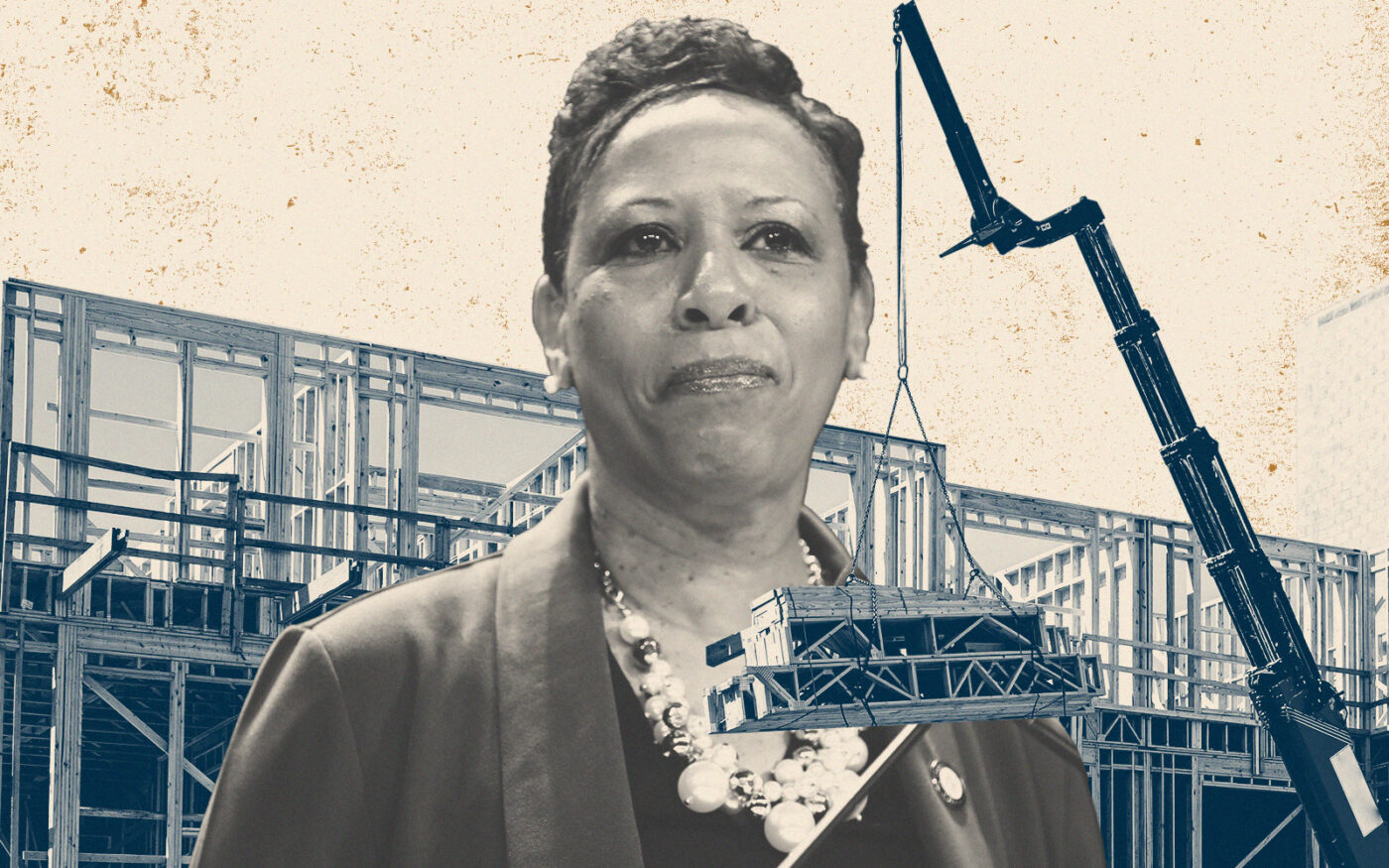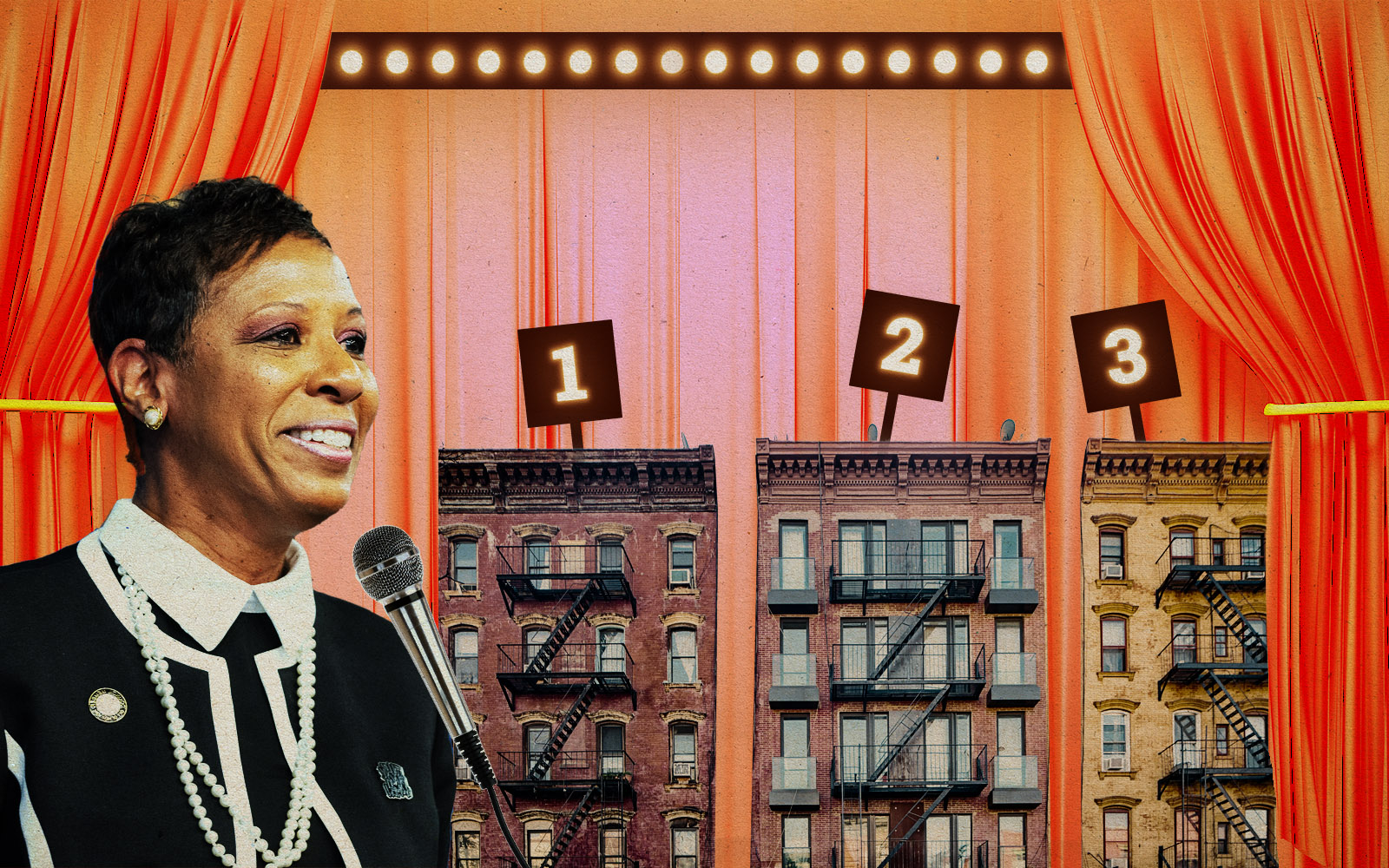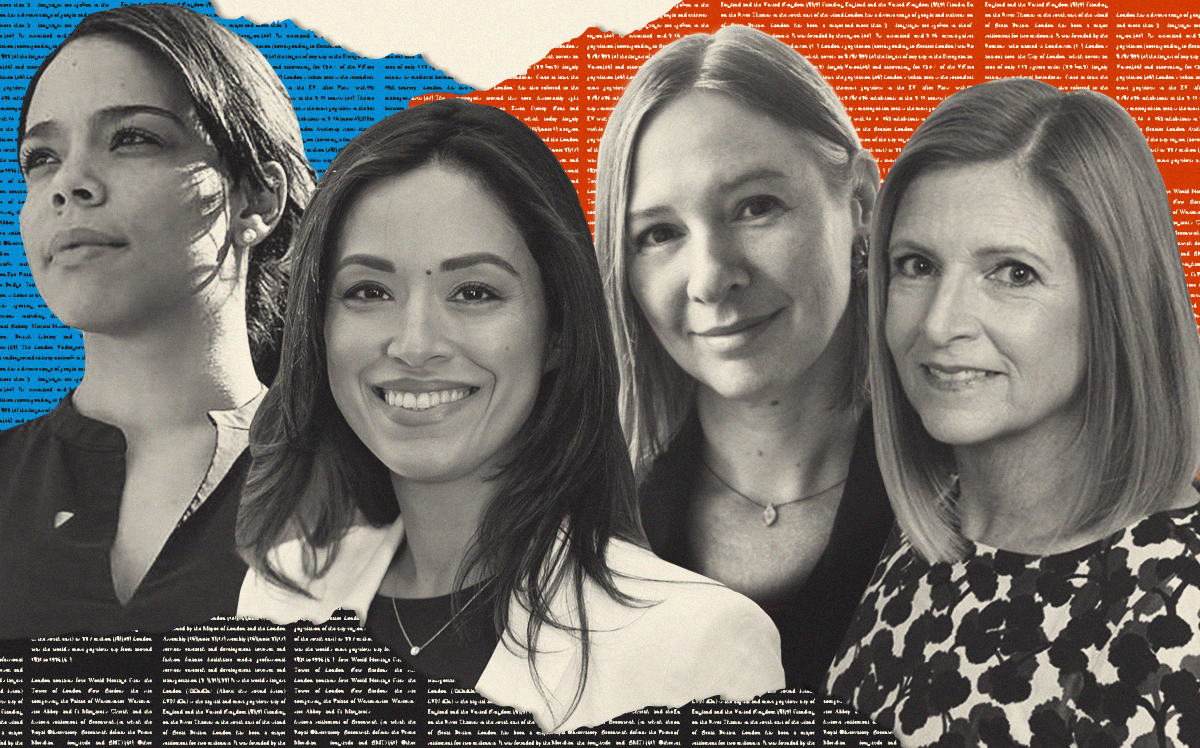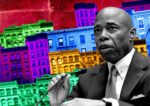City Council follows Hochul’s housing failure with unfunded “framework”
Speaker Adrienne Adams’ proposal has more political appeal, but lacks money, teeth

Two weeks after the governor’s statewide housing plan was unceremoniously blocked, the City Council speaker unveiled a similar proposal for the five boroughs.
City Council Speaker Adrienne Adams on Thursday announced a “fair housing framework” that shares Gov. Kathy Hochul’s goal of adding homes, but adds a component crucial in city politics: affordability.
Like Hochul’s Housing Compact, the speaker’s plan would create targets for each of the city’s 59 community districts. But the targets would be more nuanced — tailored to each area and involving not just total units but also low-income and supportive housing.
Its citywide goals include two other metrics: new units for aging New Yorkers and preserved homes for households earning 60 percent or less of the area median income.
The framework is substantially weaker than Hochul’s proposal in that it neither sets the targets nor mandates that they be met. Rather, it requires the city’s housing agencies to create them every five years, starting in January 2025, after numerous hearings. The city would then have to pass laws to reach the targets.
Another difference from the Hochul plan is that it has an underlying principle of fairness, which means different things to different people. Speaker Adams seems likely to interpret it as most of the Council’s 51 members do, which is that wealthier parts of the city must allow far more affordable housing than they have in the past, while poorer parts should be protected from substantial market-rate development.
During the latter years of the de Blasio administration, that framework allowed for large-scale upzonings of Soho, Noho and Gowanus, but stopped them in the South Bronx and Bushwick.
However, the Council is no monolith; opinions vary across the city about what housing is appropriate in any given neighborhood. The speaker, who has power over her members but also depends on them for her leadership position, cannot rule by fiat. Individual Council members have long enjoyed an unwritten authority to stop rezonings in their districts.
Adams did manage to erode that power to authorize housing developments last year in Throggs Neck and Astoria. Whether she can duplicate that feat in the city’s many other low-scale, plurality white but not wealthy enclaves is an open question.
This year, one developer’s proposal for a modest, mixed-income apartment building in Homecrest, Brooklyn, was vociferously opposed by the local community board and City Council representative. They wanted it cut from eight stories to five.
The developers withdrew their zoning application, saying the expiration of the 421a tax break made the project infeasible, but it seemed destined for political defeat regardless.
The speaker’s blueprint takes aim at such outcomes.
“Not only are we failing to build enough housing overall, but we are also failing to equitably distribute housing throughout the city,” Adams’ plan states. “Many neighborhoods with abundant access to infrastructure and amenities like open space, thriving schools, and public transit have produced far too few housing units in recent decades.”
Production of affordable units, meanwhile, has been concentrated in the poorest areas. In part that is because affordable housing developers cannot compete with market-rate or mixed-income projects for development sites in wealthy neighborhoods. It is not clear how Adams intends to change that dynamic.
Another key will be how much market-rate housing Adams will call for in communities of color, where it is routinely opposed as an engine of gentrification, despite research showing that it neither accelerates displacement nor pushes up rent in existing homes.
The speaker tips her hat to opponents of gentrification, saying housing will be distributed based in part on “displacement risk/vulnerability indicators.” Another premise of her plan is to increase the use of rental vouchers in “high-opportunity” areas, where market-rate rents are far too high for voucher-holders to afford. And, checking all the boxes, it takes climate change and infrastructure capacity into account.
Adams’ Council has the power to require new, market-rate homes to cross-subsidize affordable ones, but it cannot simply allocate billions of dollars for low-rent apartments. The mayor largely controls those purse strings, which in turn are limited by what the economy produces.
Previous speakers and mayors have produced housing plans, including one by the de Blasio administration in 2021 very much like this one. The “Where We Live” Fair Housing plan called for a citywide framework to “increase housing opportunities, particularly for low-income New Yorkers, in amenity-rich neighborhoods.”
The speaker’s plan would make such a framework a legal requirement, but would not by itself incentivize, let alone require, any housing.








